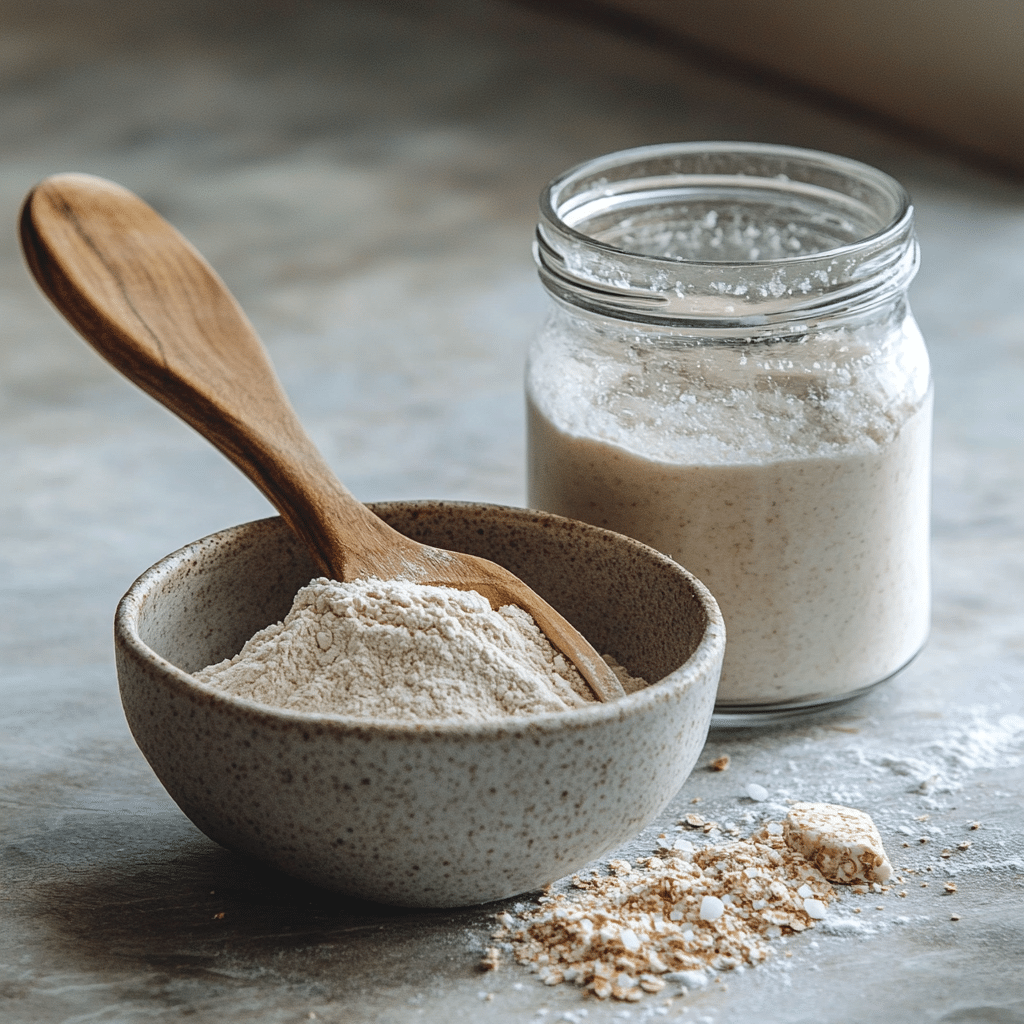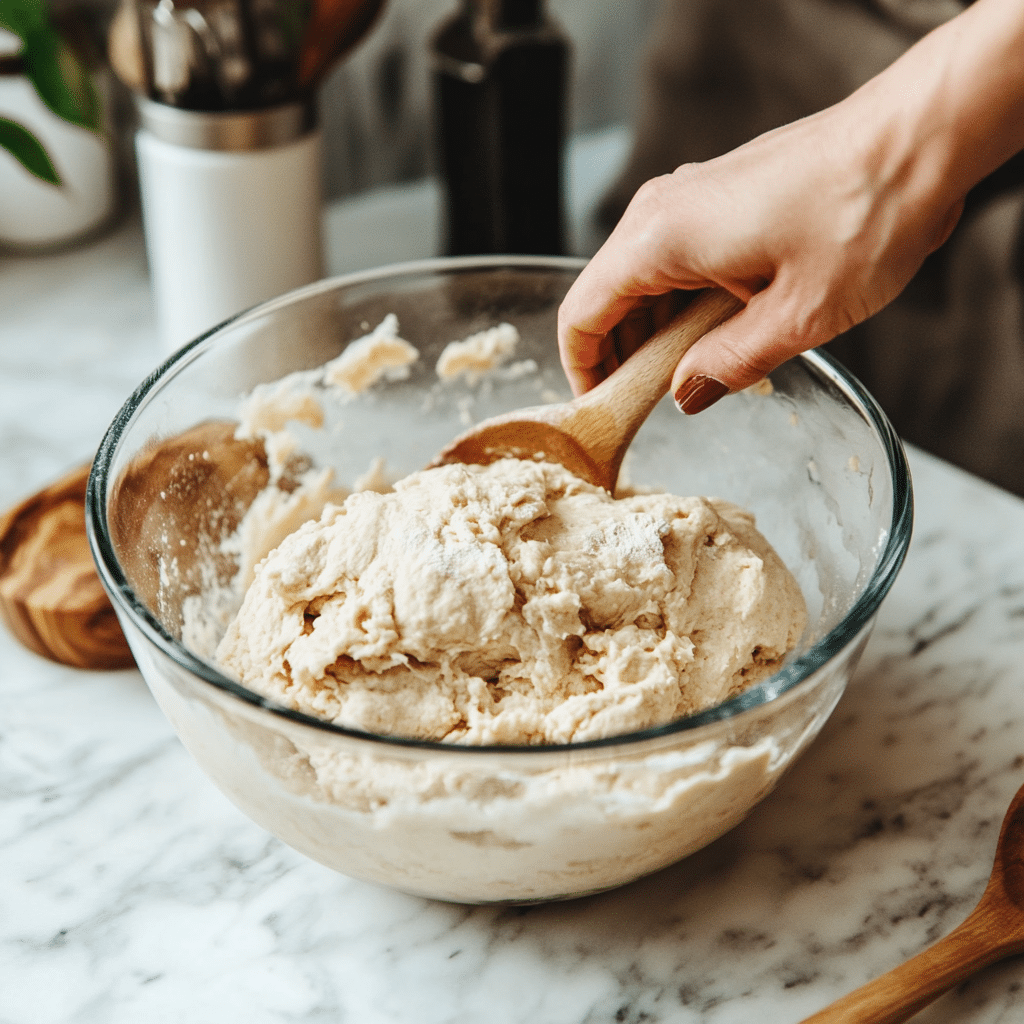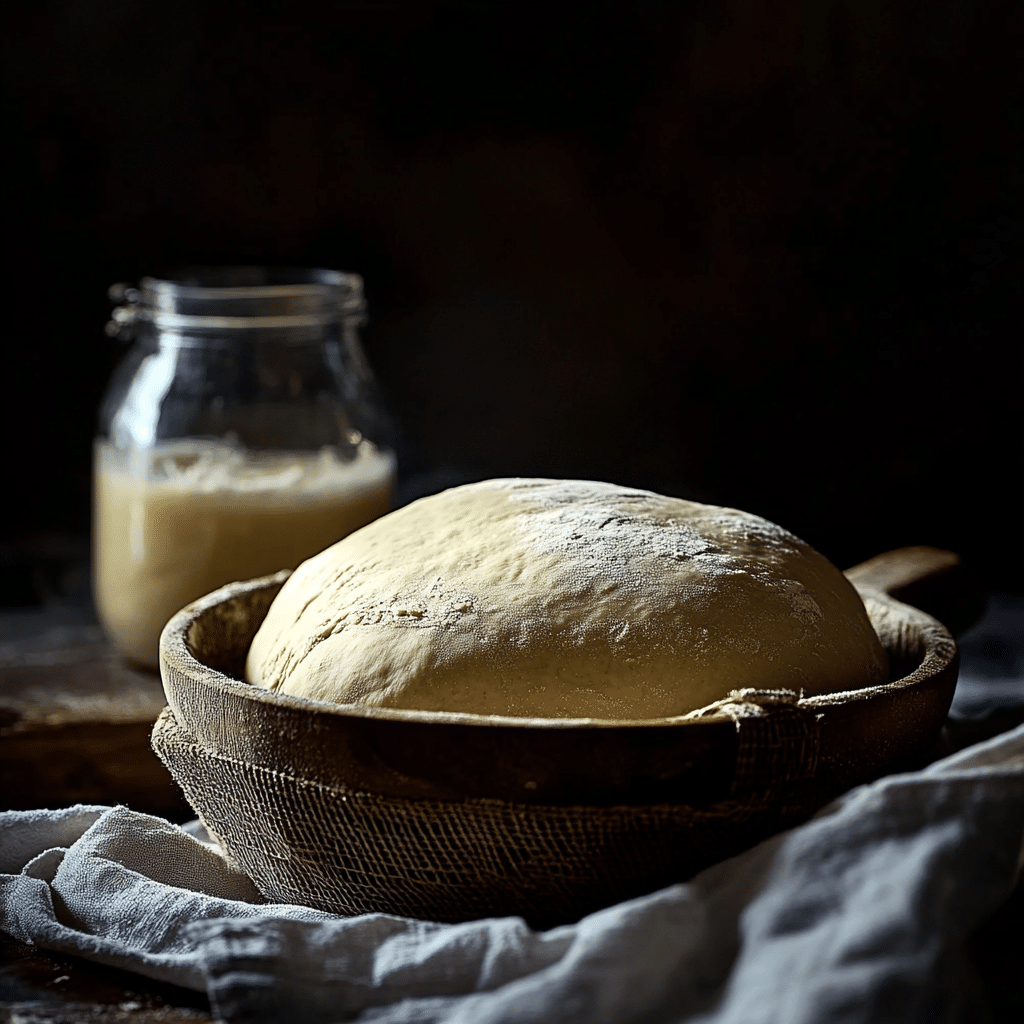Sourdough low FODMAP bread is more than a health trend—it’s a delicious solution for sensitive stomachs. Looking to enjoy sourdough while staying gut-friendly? You’re not alone. This article walks you through the magic of low FODMAP sourdough bread, what makes it IBS-friendly, and how to make it part of your routine. You’ll learn why it works, how to identify real sourdough, and even how to bake your own. If you’ve ever wondered “is sourdough low FODMAP” or “is sourdough bread low FODMAP,” this is your go-to guide—straight from a real sourdough-obsessed kitchen.
PART 1: My Low FODMAP Sourdough Journey
Why Sourdough Became My Gut-Friendly Savior
When I first discovered my gut was sensitive to high-FODMAP foods, I felt defeated. As a baker, the idea of giving up bread—real bread—felt unbearable. But then, I dug deeper and found hope in something old: sourdough low FODMAP bread. Not just any loaf, but long-fermented, wild-yeast bread made the traditional way. I’d been baking sourdough for years, but I didn’t realize how its slow fermentation could actually make it more digestible for low FODMAP diets.
What changed everything? A trip to a coastal workshop in Oregon, where I met another baker managing IBS with low FODMAP sourdough techniques. She taught me to extend my fermentation time and use flours like spelt and gluten-free blends, which are better tolerated for people who need sourdough bread low FODMAP recipes. That moment flipped a switch for me. Now, I wasn’t just baking to enjoy—I was baking to heal.
From Dense Mistakes to Delicious Healing
Believe me, my first few low FODMAP sourdough bread attempts were rough. Underproofed bricks and overly sour doughs taught me patience and observation. Over time, I discovered that a 24–48 hour ferment made all the difference. That’s when I realized that is sourdough low FODMAP wasn’t just a question—it was a method, a mindset, and a real solution.
So, is sourdough bread low FODMAP? It can be, but it depends on the process. Many supermarket loaves labeled sourdough skip fermentation altogether. You’ll learn more about that in Part 2. For now, remember this: low FODMAP sourdough helped me reclaim bread without the bellyache.
Print
Sourdough Low FODMAP: 1 Gut-Friendly Bread Guide That Works
- Total Time: 19 hours
- Yield: 1 loaf 1x
Description
A gut-friendly sourdough bread made with spelt flour and long fermentation to reduce FODMAPs. Ideal for IBS and digestive wellness.
Ingredients
500g spelt flour
100g active sourdough starter
375g water
10g salt
Instructions
1. Mix all ingredients and let rest for 1 hour.
2. Perform 4 sets of stretch and folds over 4 hours.
3. Let dough ferment at room temperature for 12–24 hours.
4. Shape dough and cold-proof in the fridge overnight.
5. Bake in a preheated Dutch oven at 475°F for 20 minutes covered, then 20 uncovered.
Notes
Use only a wild yeast starter—no added yeast.
Monitor portion size if following a strict low FODMAP diet.
- Prep Time: 18 hours
- Cook Time: 40 minutes
- Category: Bread
- Method: Fermented Baking
- Cuisine: Rustic
Nutrition
- Serving Size: 1 slice
- Calories: 150
- Sugar: 0g
- Sodium: 200mg
- Fat: 1g
- Saturated Fat: 0g
- Unsaturated Fat: 1g
- Trans Fat: 0g
- Carbohydrates: 30g
- Fiber: 2g
- Protein: 4g
- Cholesterol: 0mg
Keywords: sourdough low fodmap, low fodmap sourdough bread, is sourdough low fodmap
PART 2: The Science Behind Low FODMAP Sourdough
What Makes Sourdough Low FODMAP?
Here’s where it gets fascinating. Traditional sourdough low FODMAP methods rely on a slow fermentation process using wild yeasts and lactic acid bacteria. This long ferment breaks down fermentable carbohydrates—especially fructans, the big FODMAP offenders found in wheat and rye. That’s why low FODMAP sourdough bread is often better tolerated by people with digestive issues or IBS.
According to Monash University—the global leader on low FODMAP research—sourdough bread low FODMAP ratings apply to certain spelt and wheat sourdoughs, but only if fermented properly. The key isn’t just the ingredients—it’s the time and technique. Wondering is sourdough bread low FODMAP if it’s made quickly? Probably not. The fermentation has to be real.
Most supermarket “sourdough” loaves cut corners. They use yeast or sour flavor additives without the proper fermentation needed for low FODMAP sourdough benefits. So when shopping, stick to loaves with simple ingredients—flour, water, salt, and ideally a natural starter—and fermentation times of 12–24 hours.
Is Sourdough Bread Good for IBS?
Yes—when it’s the real deal. Real sourdough low FODMAP bread is often gentler on the gut thanks to reduced FODMAPs and gluten structure changes. That said, portion control is key: most people tolerate up to 2 slices (about 50g) of properly fermented sourdough.
If you’ve been asking is sourdough low FODMAP, you now know the answer is “yes”—if it’s crafted with care. The best low FODMAP sourdough is handmade, slow-risen, and simple. Not just a label, but a process.

Part 3: How to Make Low FODMAP Sourdough at Home
Key Ingredients for Low FODMAP Sourdough Bread
Making your own low FODMAP sourdough at home means you get full control over what goes into your loaf—and how it’s fermented. To keep it truly sourdough low FODMAP, you’ll want to choose flours that are easier on digestion. Great options include spelt, white sourdough flour, or gluten-free blends like rice and buckwheat. Then it’s just water, salt, and a healthy starter.
The real magic lives in Clementine, my sourdough starter. She’s my gut-friendly kitchen partner and travels with me to every bake-along workshop. A strong, active starter is critical—it jumpstarts fermentation and helps lower FODMAP content over time. Aim for at least 18 to 24 hours of bulk fermentation at room temperature. A cold proof in the fridge for 12–24 more enhances flavor and digestibility, making it truly sourdough bread low FODMAP approved.
Here’s a trick I use constantly: make double batches and freeze your shaped dough after the cold proof. Then you can bake fresh bread even on your busiest days—and keep your low FODMAP sourdough bread habit going strong.
Step-by-Step: Sourdough Bread Low FODMAP Version
- Mix 500g spelt flour, 100g active starter, 375g water, and 10g salt.
- Let it autolyse (rest) for 1 hour.
- Perform 4 sets of stretch and folds over 4 hours.
- Let it bulk ferment at room temperature for 12–24 hours.
- Shape, then refrigerate overnight for cold proofing.
- Bake in a preheated Dutch oven at 475°F for 20 minutes covered, then 20 minutes uncovered.
And voilà—you’ve just made your own low FODMAP sourdough. Whether you’re just starting or have years of baking behind you, this process ensures each loaf is gentle, flavorful, and gut-friendly.

Part 4: How to Buy Real Low FODMAP Sourdough and Avoid Fakes
How to Spot Authentic Low FODMAP Sourdough
Not ready to bake yet? No problem. Buying sourdough low FODMAP bread can be smart—if you know what to look for. Sadly, most commercial “sourdough” options aren’t truly fermented. They often skip the long proofing process and use commercial yeast or flavoring agents. That means they’re not really low FODMAP sourdough bread, even if the label says so.
So how do you tell the difference? Check the ingredient list. You should only see flour, water, salt, and possibly “sourdough starter.” Avoid anything with “yeast,” “vinegar,” or additives. Truly fermented loaves may also mention a 12–24 hour rise or cold proof, which is key for reducing FODMAPs.
Ask your local baker about fermentation time. A real sourdough baker will proudly talk about their process. That’s a sign you’re getting bread that could genuinely be sourdough bread low FODMAP approved.
Is Supermarket Sourdough Low FODMAP?
Most of the time—no. Supermarket loaves rarely meet the standard. Mass-produced bread simply doesn’t allow for the slow fermentation that makes low FODMAP sourdough effective. Even if the flavor is “sour,” that doesn’t mean it’s fermented properly.
However, some small-batch or organic brands are changing the game. If you find one, double-check the label, and stick to moderate portions (1–2 slices). Still unsure? Stick with homemade.
So, is sourdough bread low FODMAP from the store? Sometimes, but only if it’s truly fermented. If you’re serious about feeling good, baking your own or supporting artisan bakers is your best move.

Frequently Asked Questions About Sourdough & FODMAPs
Is sourdough bread low FODMAP friendly?
Yes—if it’s truly fermented. Sourdough low FODMAP bread is made through a slow fermentation process that reduces FODMAPs, especially fructans. Spelt sourdough and long-fermented wheat options are well-tolerated by many people with IBS.
Is sourdough bread good for IBS sufferers?
For many people with IBS, the answer is a confident yes. The fermentation process reduces gut-irritating sugars. Many report better digestion, less bloating, and improved gut health after switching to low FODMAP sourdough bread. Just be sure to avoid fake sourdoughs with added yeast.
Is supermarket sourdough low FODMAP?
Generally, no. Most supermarket loaves labeled “sourdough” are not truly fermented. They use baker’s yeast and lack the long fermentation that makes sourdough low FODMAP. Look for artisan labels or shop at local bakeries that understand fermentation.
Is sourdough bread an inflammatory food?
Not typically. Real sourdough is often easier on the gut than conventional bread and may be less inflammatory due to reduced gluten and FODMAP content. Using high-quality flour and slow fermentation can even support your gut microbiome.
Conclusion: Real Sourdough, Real Relief
Sourdough low FODMAP bread changed my relationship with food—and it can do the same for you. When fermented the traditional way, it becomes more than just bread. It’s nourishment, healing, and satisfaction without the bloat. Whether you bake it yourself or find a trustworthy local loaf, you now know what to look for and why it matters. Trust the process, taste the difference, and enjoy sourdough without compromise.

